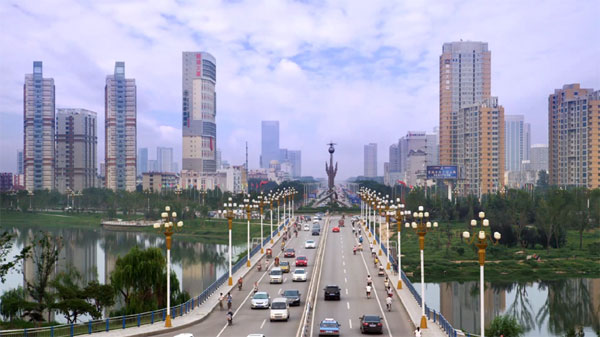Liaocheng Economic and Technological Development Zone

Liaocheng Economic and Technological Development Zone [Photo/kfq.lcxw.cn]
Liaocheng Economic and Technological Development Zone, founded in October 1995 in Shandong's Liaocheng city, was upgraded to a national development zone in March 2013 under the approval of the State Council. It covers 191 square kilometers, with a resident population of 200,000.
Located at the junction of Hebei, Henan and Shandong provinces, the zone enjoys great geographical advantages. It can not only make use of the opening up of eastern coastal cities, but also take advantage of the rich resources of inland provinces.
The Beijing-Kowloon and Jinan-Handan railways join up here; the Jinan-Liaocheng Expressway, which goes through the zone, connects the Jinan-Qingdao, Beijing-Shanghai, and Beijing-Fuzhou expressways in the east, and National Highway 107 and the Beijing-Zhuhai Expressway in the west.
After more than 20 years' development, the zone has formed a "2+5+1" industrial development pattern. The "2" refers to the two leading industries of high-end equipment manufacturing and modern services; the "5" means the five industrial clusters of new-energy vehicles and parts, high-end equipment manufacturing, metal intensive processing, biological food and medicine, and modern services; and "1" relates to the modern agriculture industrial park.
The zone has attracted renowned companies and enterprises from more than 20 countries and regions around the world, including South Korea's largest food company CJ Cheiljedang Corp, Hong Kong-based China Resources (Holdings) Co Ltd, and Royal DSM, a Dutch multinational company specializing in nutrition, health and sustainable living.
In 2017, the zone's GDP reached 12.61 billion yuan ($1.83 billion), a year-on-year increase of 9.9 percent. The added value of industrial enterprises above designated rate increased by 8.7 percent year-on-year. Fixed-asset investment was 17.03 billion yuan, with a yearly growth rate of 16.1 percent. Its general public budget revenue totaled 1.56 billion yuan, ranking fourth among all the city's units.
Invest in China Copyright © 2026 China Daily All rights Reserved
京ICP备13028878号-6
 京公网安备 11010502032503号
京公网安备 11010502032503号





